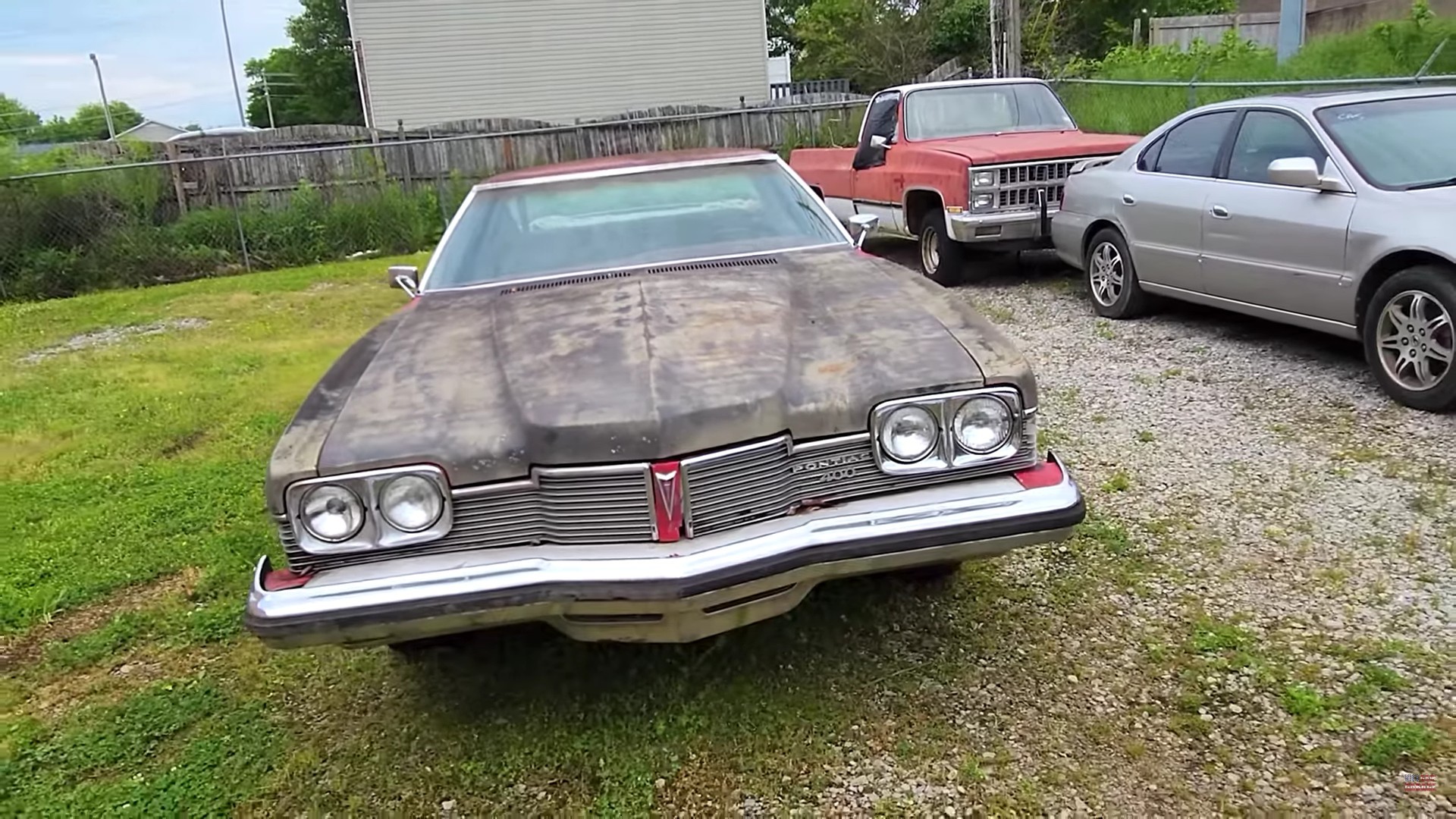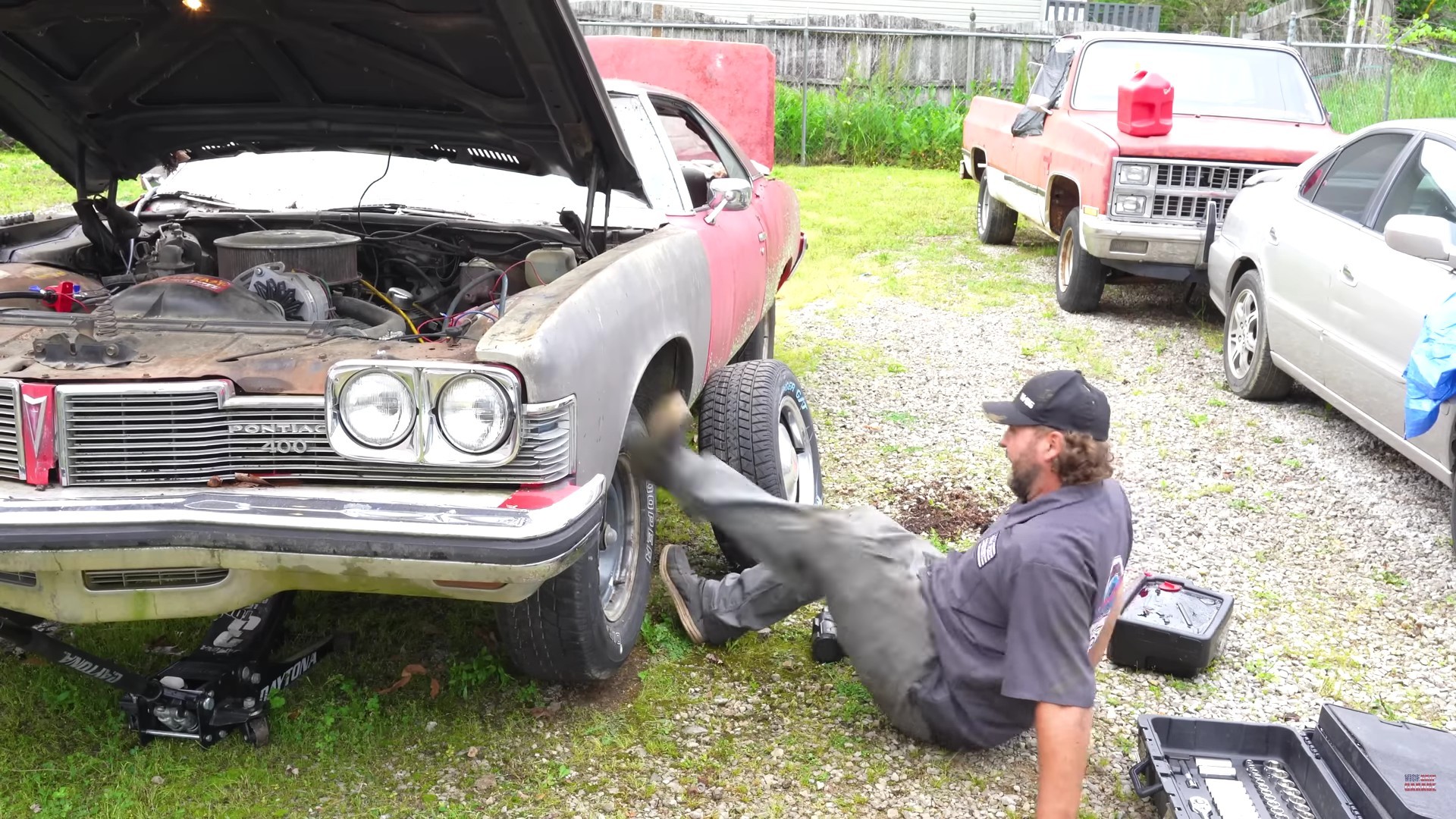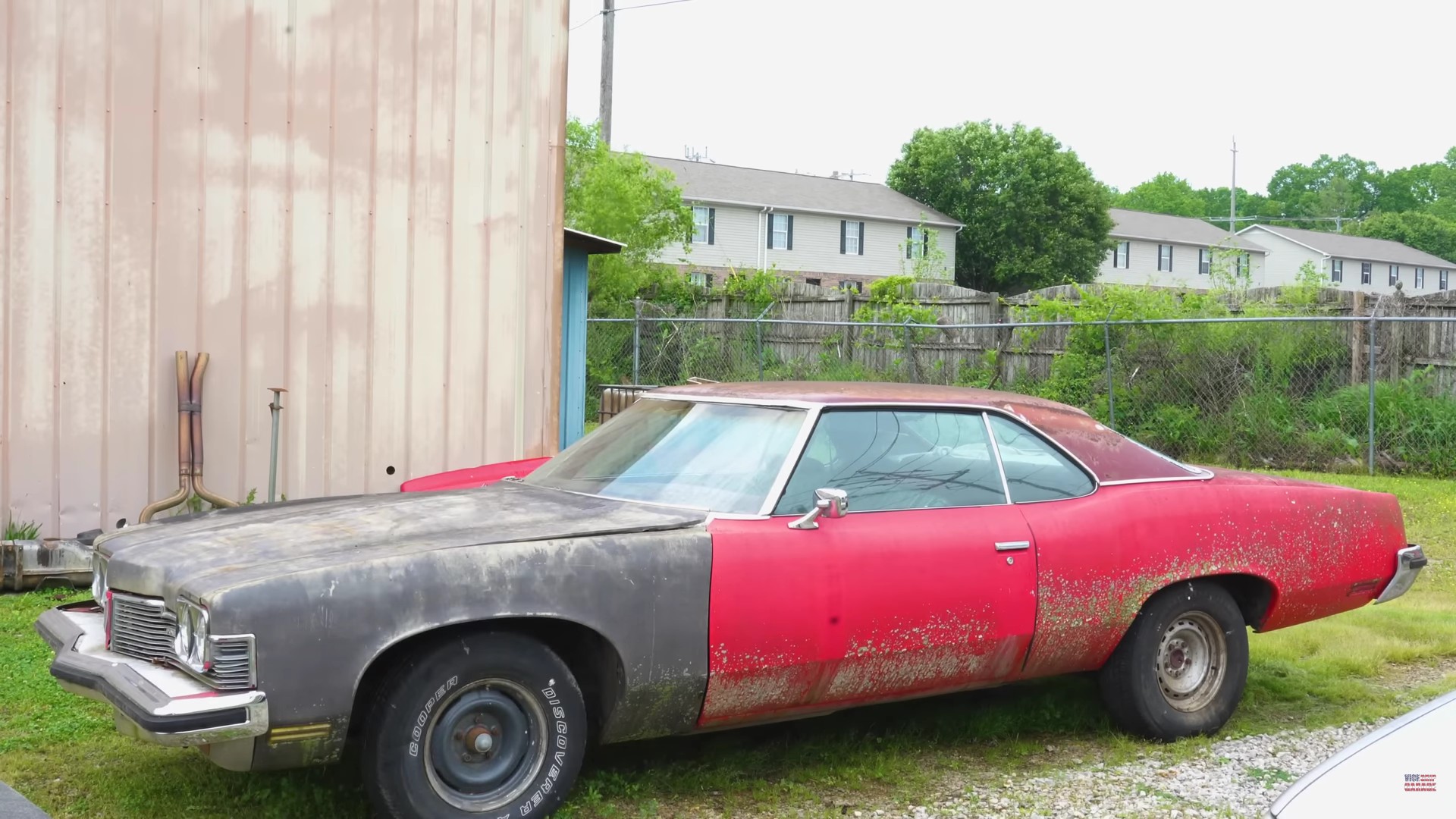Every automaker has that one make and model that drives showroom traffic, draws customers, and fills the bean counters’ books with black ink. The best-selling car of all time is the Toyota Corolla, and GM had the Chevy Impala, Ford the F-series truck, VW the Beetle, and Chrysler the Town & Country.
The Catalina was the catalyst for Pontiac, General Motors’ sporty subsidiary, to propel the brand up the sales charts fifty years ago. The Catalina lost its ragtop and did away with the Brougham trim as the Malaise Era extended its evil tentacles over the V8 residents of the United States of Automobile.
In 1973, the design of all American cars had to make way for the new federally mandated 5-mph (8-kph) impact-impervious bumper. General Motors took early precautions and introduced the flexible – but oversized – protective elements a year before.
The styling didn’t change much for the 1973 model year, and this Catalina in the video is not afraid to show off the massive curb-sized bumper. Made in July of that year, the otherwise attractive automobile last saw the road in 2013; after that, it was parked outside, somewhere in Tennessee.

Courtesy of Derek Bieri, the moribund-automobile resurrector YouTuber for Vice Grip Garage, this red-over-white-over-grey-ish-over-rust Pontiac Catalina gets a second chance at life. Make a quick note about it before you poke the finger at me for that non-existing color combination.
Initially a red-and-white with a brown interior, this Catalina had a misfortunate event sometime during its active life, and the hood and front fenders aren’t red at all. While we can say what color the front isn’t, it’s hard to specify what it actually is.
Also, the body got a repaint at one point – most evident on the driver’s door – that tried to replicate the original shade and missed. Not by much, but still. Other than that, the derelict-looking 400-CID Pontiac has not had its last say.
With some elbow grease – and a new fuel pump – the 6.6-liter V8 coughs back to life, although the gasoline-feeding system isn’t precisely NHTSA-approved. The jerrycan on the passenger’s side and the rubber hose sneaking out the door and under the hood is a makeshift solution for a short 150-mile drive from the car’s location to Derek’s garage.
Should the odometer be correct and untampered with, this car has averaged 2,500 miles (a little over 4,000 km) every year of its four-decade road-roaming adventure that began in 1973. (Remember, the last ten years were spent in isolation, so the mileage read 98k miles – some 158,000 kilometers).
Tennessee weather appears to have been forgiving with this Catalina; then again, the vlogger doesn’t make it clear if the car has been the object of a repair (minor or extensive). As we can witness, the engine runs – eventually – and the brakes do their intended job. The transmission isn’t the swiftest gear-shifting assembly on our dear Planet Piston. Still, it gets the speedometer moving without too much drama.And, predictably, the handling isn’t razor-sharp. Still, we shouldn’t hold it against this veteran Pontiac – steering responsiveness wasn’t at the top of buyers’ concerns about an automobile. In 1973, the 400 cubic-inch V8 came in three different states of tune – one more appalling than the next.

This car has the four-barrel 600CFM Holley carburetor and dual exhausts. It was the most capable 400 V8 installed on 1973 Catalinas. 230 hp (233 PS) and 325 lb-ft of torque (441 Nm), all going to the three-speed Turbo-Hydramatic (well, maybe not so “high”-dramatic with what little power the engine put out).
The other two options for the 400-cube V8 were a two-barrel that offered the measly power of 170 hp (172 PS) and the single-exhaust 4v, with an SAE Net rating of 200 horses (203 PS). Two more engines were also offered, the standard equipment 350 CID V8 (5.7 liters) and the enormous 455 cubic-inch (7.5 liters).Each came with a single or double exhaust; the three-speed automatic was the sole transmission available throughout the range.
GM’s performance division wasn’t very generous with performance options for the Catalina – and for understandable reasons. With power abandoned in the history books, the main focus was on other traits. Luxury, comfort, economy, and whatnot would divert customers’ attention from the low-fun offerings from under the hood.
At one point in life, the Catalina in our story had air conditioning, which was probably eliminated to gain a few extra horses. All the more reasons to wonder about its history, as the denouncing of power-sucking ancillaries was a typical trick of gearheads with a lead right foot.
Speculations aside, the half-century Pontiac – albeit in this less-than-optimal presentation – still holds its own and delivers the bare minimum required to drive on public roads. It is An excellent project for its next owner; this venerable automobile hasn’t laid down its weapons and could shine again. After all, it only took a pressure washer to rejuvenate it to a sparkling condition (sort of).
